| Plants Care Instructions | Don’t use chlorine water (usually tap water) as it kills the root., It should stay moist. If the coco peat is becoming light brown, it should be sprayed with water, Expose the plants to 3-4 hours of daily filtered/ indirect sunlight, Avoid temperature shock by shifting plant between indoors and outdoors on a regular basis for better growth., RO water is chlorine free and recommended, Check the coco peat before watering. |
|---|
| Plants Care Instructions | Don’t use chlorine water (usually tap water) as it kills the root., It should stay moist. If the coco peat is becoming light brown, it should be sprayed with water, Expose the plants to 3-4 hours of daily filtered/ indirect sunlight, Avoid temperature shock by shifting plant between indoors and outdoors on a regular basis for better growth., RO water is chlorine free and recommended, Check the coco peat before watering. |
|---|


Peace Lily Plant - Spathiphyllums Wallisii
Rubber plant or rubber tree (Ficus Elastica) is an ornamental houseplant that grows between six and ten feet tall indoors and features large, shiny leaves. Most varieties of rubber plants have dark green leaves, but the black prince and burgundy rubber plants have blackish-red leaves. The milky latex sap of rubber trees is essential to the manufacturing of natural rubber. If you’re seeking a low-maintenance indoor tree to spruce up your home decor, look no further than a rubber plant. This small tree’s glossy green leaves make it the focal point of any room in the house.


Light & Temperature
Like most plants in their genus, rubber plants love lots of bright, diffused light. They can tolerate soft morning sunlight but should be moved out of the line of harsh direct rays in the afternoon as they can singe the leaves. Plants that do not receive sufficient light will become leggy, lose their lower leaves, and their leaf color will become dull instead of glossy and vibrant. Rubber Plants are best kept in moderate to warm temperatures between 60 degrees Fahrenheit and 75 degrees Fahrenheit.


Watering
Water your rubber plant frequently—they like to be kept steadily moist but not soaked. Rubber plants also are vulnerable to excessive dryness and don't tolerate drought well. To check if its time for another watering, check the moisture levels in the first few inches of soil—if they're dry and crumbly, it's time to water your plant again.
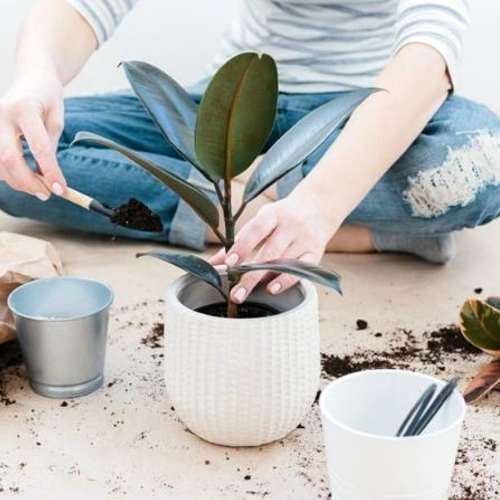

Fertilization
When it comes to their soil composition, rubber plants aren't picky. Typically, any good, fast-draining potting soil will likely do, many indoor gardeners opt for a cactus mix. Feed the plant a weak liquid fertilizer throughout the growing season. They are relatively heavy feeders when healthy. Some experts recommend only lightly fertilizing indoor plants to prevent stretching and plants becoming root-bound because they grow too fast.


Repotting Rubber Plant
Your rubber plant will only grow as large as its container allows. If you’d like your rubber plant to grow larger, repot it every year or two to make sure it has the space it needs. Choose a new pot that is one to two inches wider in diameter than your plant’s current pot. Larger plants can be difficult to repot, so if you can’t move the container, scrape off a few inches of potting media and replace it with new potting soil.
Propagating Rubber Plant
Like any houseplant, the best time to propagate a rubber tree (or any plants) is in the early spring to late summer, when the weather is warm. Here are the steps:
- Pick a healthy stem with healthy leaves.
- Make the cut. Cut about halfway up this stem. Preferably, have a leaf right below the cut on the main plant. Immediately dab this cut stem on the mother plant with rooting hormone.
- Remove the bottom set of leaves from the cutting. At the end of this step, you’ll want 2-3 leaves on top.
- Dip the cutting in rooting hormone and grab your pot filled with moist soil. Unlike Monsteras, Rubber trees do not need to root in water. These get planted right into fresh soil and are happy clams.
- Provide a mini greenhouse. Remember that plastic bag? This is where you need it. You’re going to make a super casual greenhouse for your new baby. Place him gingerly in the bag and seal it 90% of the way. It’s important the leaves don’t touch the bag too much. Give Plant a good soak and place him in a warm spot with partial sun.
- Keep the soil moist and his home warm – you need to be patient. You can remove the bag in a month or two. In about a month root will develop.
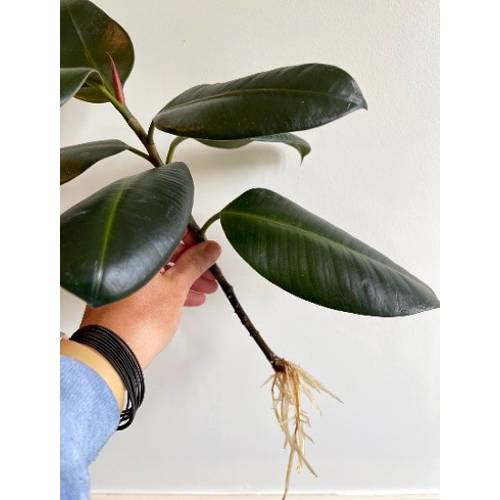

Plant Care Tips
- Cleaning & Pruning– clean your plant using contemporary cleaning methods like dusting and wiping using a soft damp cloth. Your arrowhead plant won’t need to be pruned unless it’s become very unruly and the look is bothering you. You may have to remove the occasional crispy leaf (it’s normal for houseplants to get rid of some of their old foliage), but that’s about it.
- Mealybugs or scale may hide under stems and leaves. To remove the pests, use a spray bottle of water or wipe the insects off gently with a bit of rubbing alcohol on a paper towel or cotton swab. Repeated applications will be necessary to remove the pests’ offspring. If the plant is too heavily infested, it may be better to take a clean cutting from it and start anew.
- Plant drooping are signs of a thirsty plant in need of more frequent or deeper waterings. Dry and parched soil causes the plant to lose its natural stiffness and droop.
- All-over yellowing & squishy leaves indicates that the plant is getting too much water.
- Leaves curling can be due to inadequate light exposure. Less light causes less photosynthesis. This produces less energy to sustain the upright posture of the leaves.
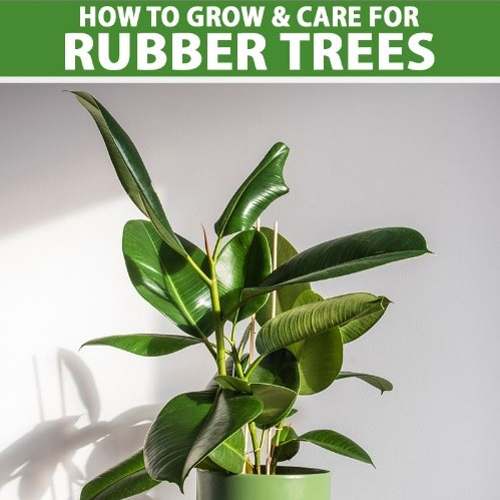



Our Favourable Aspects
- Potting Mixture: It’s a mixture of appropriate amounts of soil, cocopeat & organic vermicompost. Provides best environment to the plant’s roots. It also contains slow-release Fertilizer which gives nutrients to the plants every time it is watered for 6 months.
- Packaging: Plant is secured in a good quality cardboard packaging. Inner Box holds the potted plant in place so that any movement during transit does not affect the plant. Outer box has slits which allow the plant to breathe freely during transit.

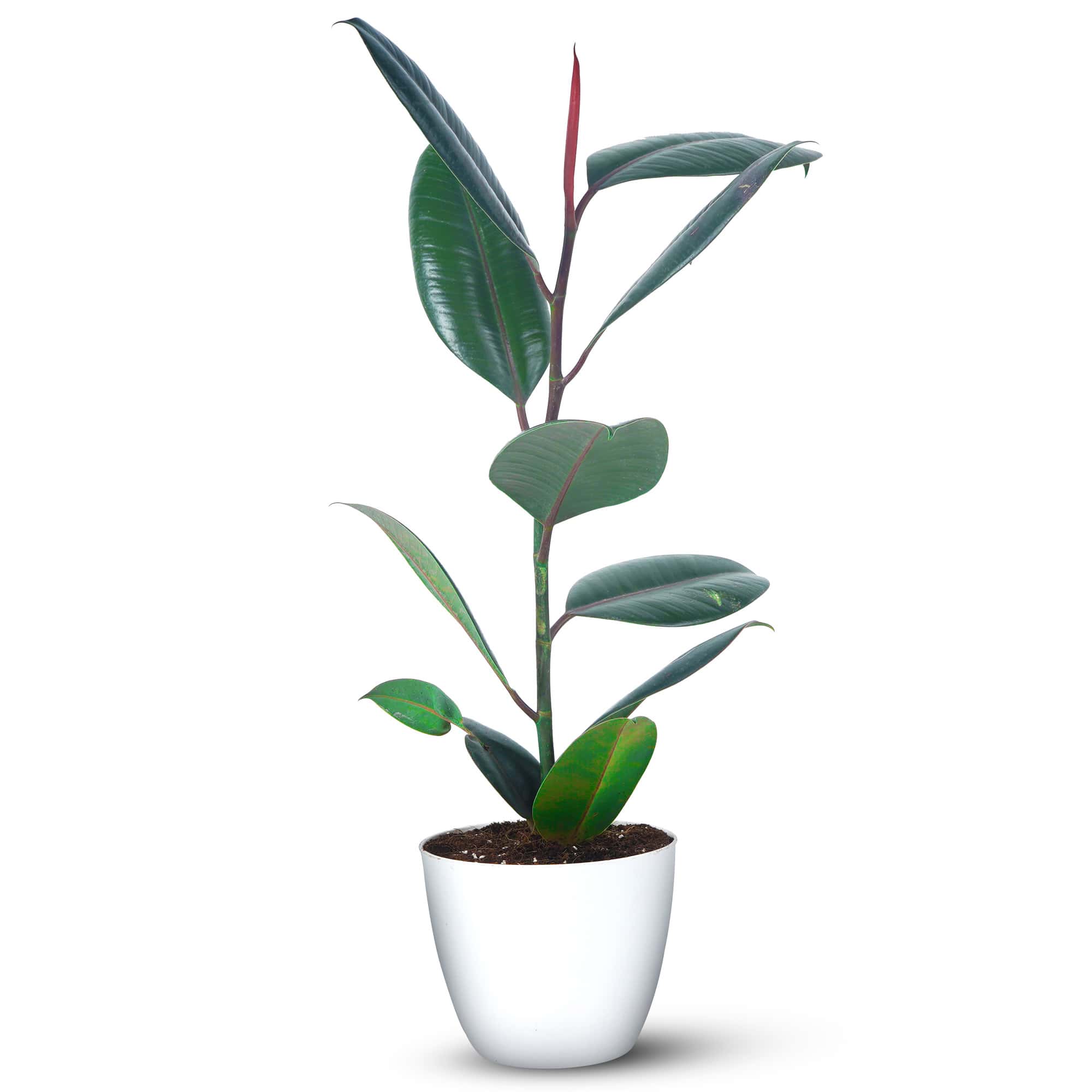

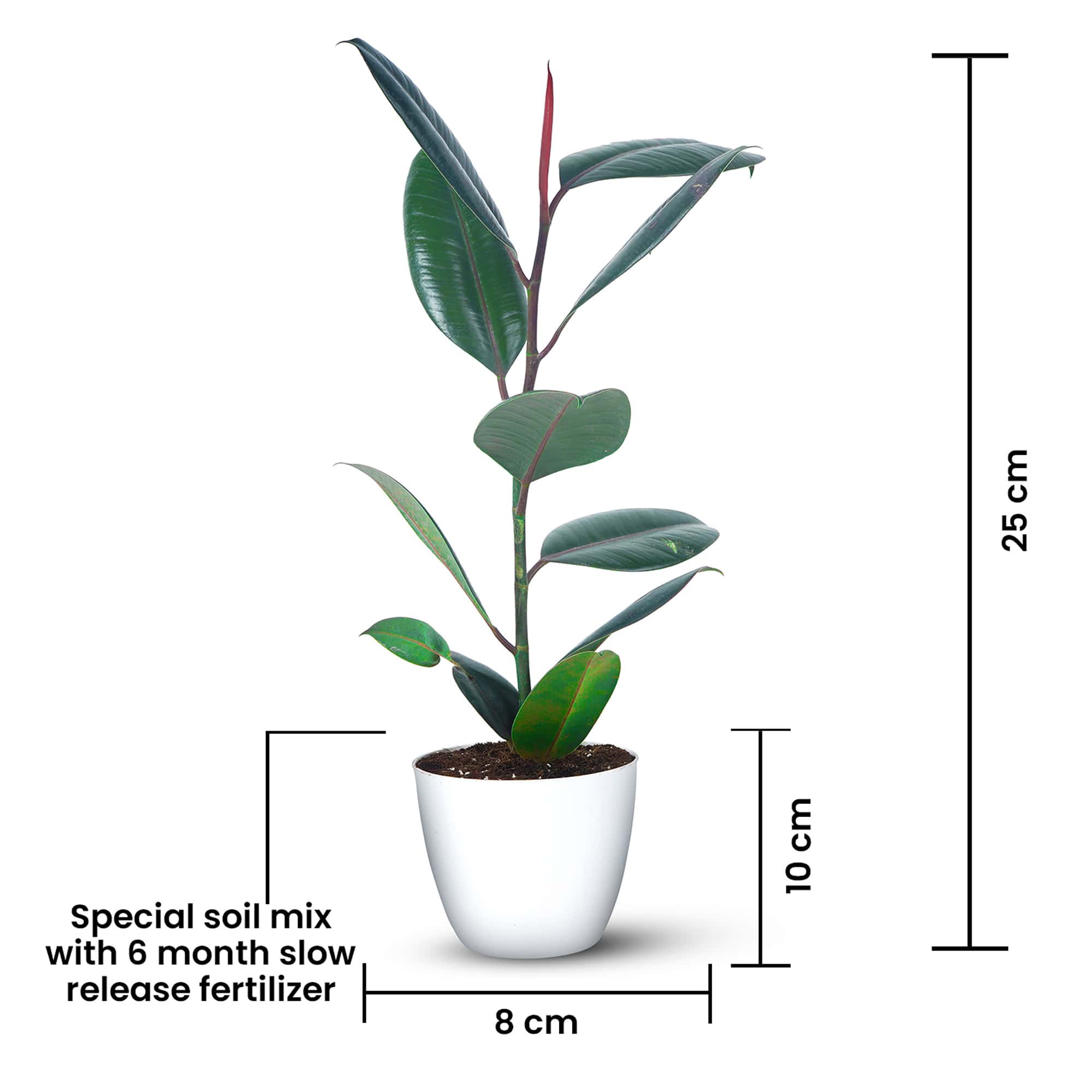
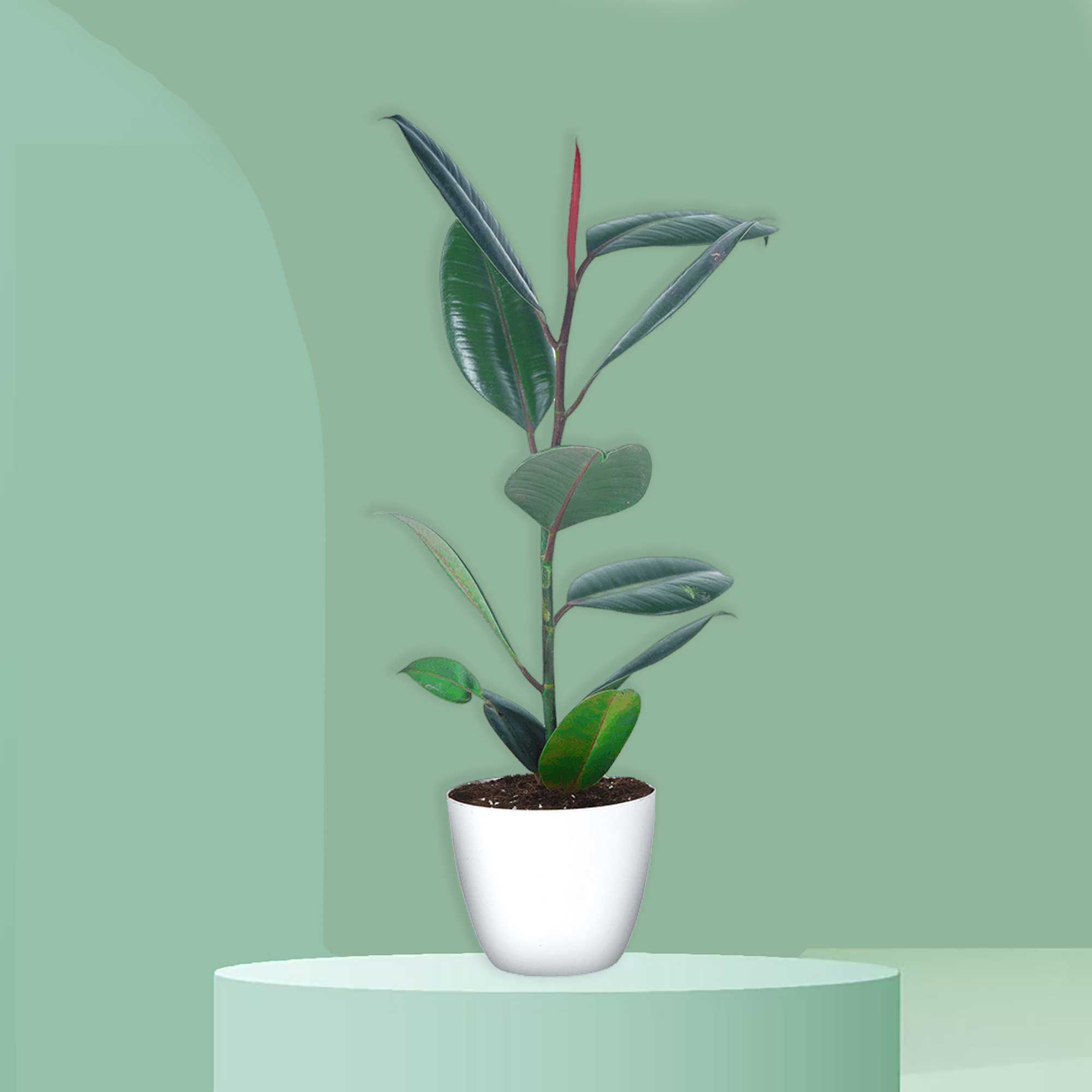
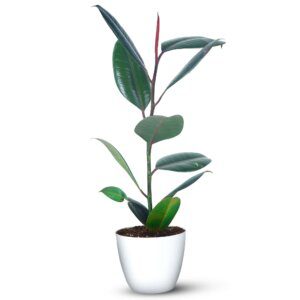
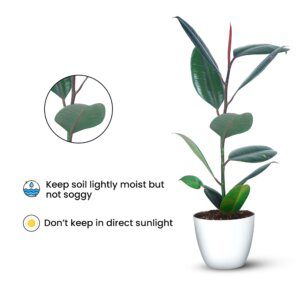
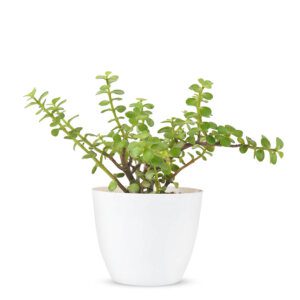


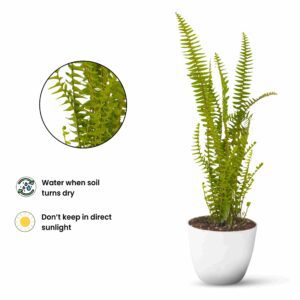

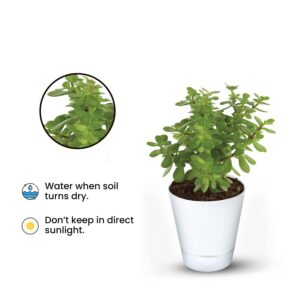


Reviews
There are no reviews yet.